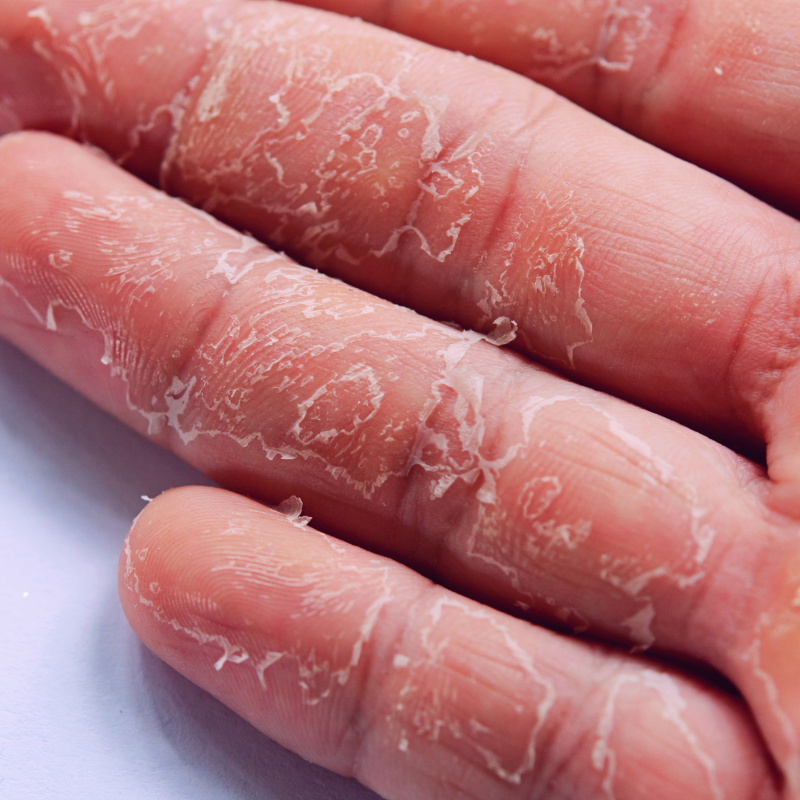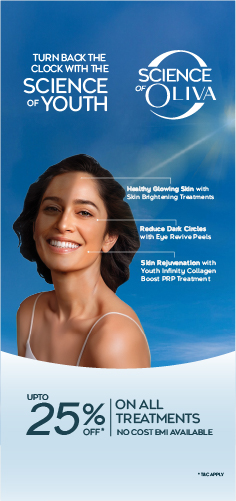In This Article
Benzoyl Peroxide and Salicylic Acid: Benefits, Uses, and Comparison
Benzoyl peroxide and salicylic acid are highly effective skincare ingredients that help tackle acne effectively. They both offer numerous benefits to clear breakouts and improve skin texture. However, it is essential to learn how to use benzoyl peroxide and salicylic acid together correctly to get maximum benefits for your skin.
This article will explain the benefits of using benzoyl peroxide and salicylic acid. We will also discuss their risks and the difference between benzoyl peroxide and salicylic acid.
In This Article

Can I Use Salicylic Acid And Benzoyl Peroxide Together?
Yes, you can use benzoyl peroxide and salicylic acid together. However, be cautious when using, as both are powerful acne treatments that work in differently. [1]
Salicylic acid helps exfoliate the skin and clear pores, while benzoyl peroxide kills acne-causing bacteria. Are you wondering, ‘How can I use salicylic acid with benzoyl peroxide?’ We have you covered. Remember that together, these can improve acne treatment but can also lead to skin irritation.
To minimise this, try using them on alternate days. You can also apply one in the morning and the other at night. [2] Always use a moisturiser and sunscreen to protect your skin. You must also consider consulting a dermatologist for personalised advice.
How To Use Salicylic Acid And Benzoyl Peroxide Together?
Using benzoyl peroxide and salicylic acid together effectively treats acne. However, you must understand the right way to do so to avoid skin irritation or any other side effects. Here are some ways on how to use salicylic acid and benzoyl peroxide together that you can incorporate in your skincare routine:
-
Understanding How They Work:
Salicylic acid is an effective exfoliant that penetrates deep into skin pores. It helps dissolve excess oil, sebum build-up, and dead skin cells preventing and treating acne. Benzoyl Peroxide, on the other hand, is antibacterial. It kills acne-causing bacteria in the skin pores or on the surface. It helps minimise inflammation and infection. [3]
-
Always Perform a Patch Test:
It is best to perform a patch test before using either of these products to ensure your skin does not react negatively to them. You can apply a small amount of each product separately on different areas of your skin. Allow it 24-48 hours to check for reactions, if any. Use only if your skin shows no side effects.
-
Start Slow:
Whenever you introduce new ingredients to your skincare regime, always start slow. In this case, introduce one product at a time. For example, you can use salicylic acid in your morning regime and benzoyl peroxide at night so that there is minimal scope for skin irritation.
-
How to Apply:
Here is a systematic way you can use salicylic acid or benzoyl peroxide for acne and skincare:
Morning Skincare Routine:
Start by using a gentle, non-comedogenic cleanser to remove all impurities from the skin without harming it. If your skin is used to these products, you can also consider using salicylic acid or benzoyl peroxide cleanser.
Use a salicylic acid-based toner, serum, or spot treatment as instructed on the product packaging.
Follow up with a lightweight, non-comedogenic moisturiser to ensure your skin remains well-hydrated.
Remember that Salicylic acid can increase your sun sensitivity. So do not forget to use a broad-spectrum sunscreen with at least SPF 30.
Evening Skincare Routine:
Cleanse your face and remove all makeup and impurities using a gentle cleanser.
Apply a dermatologist-suggested benzoyl peroxide treatment that could be a spot treatment or an all-over application.
Follow up with a thick moisturiser, as benzoyl peroxide can dry your skin.
Monitor and Adjust As Needed:
It is essential to monitor how your skin reacts to these products. If it becomes overly dry or irritated, you can make minor adjustments. Try reducing the frequency of use. You can also use just one of the two – benzoyl peroxide or salicylic acid in the morning and on alternate days. However, it is best to consult your dermatologist for advice on continued usage.
Benefits Of Using Benzoyl Peroxide And Salicylic Acid Together
Combining benzoyl peroxide and salicylic acid can help your skin gain several benefits. Here are some of them mentioned below:
-
Dual Action Benefits:
While benzoyl peroxide tackles acne-causing bacteria and reduces inflammation, salicylic acid exfoliates and unclogs pores. It also removes dead skin cells and excess oil. This means both applications work on different acne triggers, improving the efficacy of the treatment.
-
Better Results:
Using benzoyl peroxide and salicylic acid together better controls acne than using just one. This helps clear your skin faster and controls acne’s spread.
-
Reduced Breakouts:
This combination can help reduce the severity of acne. It tackles red and inflamed acne, as well as blackheads and whiteheads. It reduces infection in acne, and with time, breakouts become less frequent.
-
Smoother Skin:
Salicylic acid helps exfoliate dead skin cells, producing a smoother texture. Benzoyl peroxide reduces redness and swelling, improving overall skin appearance.
-
Balanced Oil Levels:
Salicylic acid helps control oil production and reduces oiliness overall. This complements the drying effect caused by benzoyl peroxide. As a result, your skin has balanced oiliness, making it less prone to acne.
-
Preventative Care:
Regular use of benzoyl peroxide and salicylic acid can prevent future breakouts by keeping your pores clear and reducing the bacteria that cause acne.
Benzoyl Peroxide vs. Salicylic Acid
Many people wonder, ‘Is benzoyl peroxide or salicylic acid better?’ Here is a comparison of the two, highlighting the difference between benzoyl peroxide and salicylic acid. Understand it to make informed choices suitable for your skin type:
Aspect |
Benzoyl Peroxide |
Salicylic Acid |
| Primary Use | Acne treatment | Acne treatment, exfoliation, and removal of dead skin cells |
| Mechanism of Action | Kills acne-causing bacteria, reduces inflammation | Penetrates your pores, exfoliates and dissolves sebum |
| Concerns Treated | Inflammatory acne (pustules, cysts) | Blackheads, whiteheads, and mild acne |
| Product Forms | Gels, creams, cleansers, spot treatments | Cleansers, toners, serums, creams, pads |
| Frequency of Use | Once or twice a day, depending on skin tolerance | Once or twice a day, depending on skin tolerance |
| Combination with Other Treatments | Can be combined with topical antibiotics or retinoids [4] | Often combined with other exfoliants or acne treatments |
| Suitable Skin Type | Oily, acne-prone skin | Oily, acne-prone skin, suitable for more sensitive skin types |
| Duration of Use for Best Results | 4-6 weeks for noticeable improvement [5] | 6-8 weeks for noticeable improvement [6] |
| Effect on Skin Texture | Can cause dryness and peeling initially | Smooths skin texture by removing dead skin cells |
| Potential for Allergic Reactions | Can cause allergic reactions. It may lead to skin irritation in some individuals | Less likely, but it can irritate sensitive skin |
| Precautions | Avoid sun exposure, use sunscreen, patch test before use | Avoid overuse, use sunscreen, patch test before use |
| Side Effects | Dryness, redness, peeling, irritation | Dryness, irritation, mild stinging or burning sensation |
Takeaway
If you are asking your dermatologist, ‘Can I use salicylic acid and benzoyl peroxide together?’ You are doing the right thing! While these two ingredients work wonders on acne-prone skin, whether to combine them in your skincare regime depends on expert guidance and consultation. Let an expert check your skin type and concerns to determine the best way forward. With specialist advice, you will understand the correct frequency and quantity of benzoyl peroxide and salicylic acid, ensuring the best results.
Frequently Asked Questions
Start with salicylic acid to unclog pores, then apply benzoyl peroxide to kill bacteria. Ensure your skin tolerates both, and use as directed.
Benzoyl peroxide: 4-6 weeks. Salicylic acid: 6-8 weeks. Consistency is key for both treatments to see noticeable improvement.
Benzoyl peroxide is more effective for inflammatory acne, while salicylic acid is better for blackheads and whiteheads.
Benzoyl peroxide is generally more effective for folliculitis due to its antibacterial properties.
Adapalene is best for comedonal acne. Benzoyl peroxide is best for inflammatory acne and Salicylic acid for blackheads and whiteheads.
Benzoyl peroxide is typically more effective for cystic acne due to its bacteria-killing properties.
Benzoyl peroxide targets bacteria and inflammation, while salicylic acid exfoliates and unclogs pores. The choice depends on acne type and skin tolerance.
Due to their strong and active ingredients, they can cause irritation when used together. Use them separately to avoid skin irritation.
Switching may reduce irritation and focus more on exfoliation and pore-clearing. Monitor your skin for any adverse reactions during the transition.
Both are suitable for oily skin. Benzoyl peroxide reduces bacteria and oil production, while salicylic acid exfoliates and clears pores.
Benzoyl peroxide is antibacterial, Salicylic acid exfoliates, and Retinol increases cell turnover. It is advisable to use them based on your specific skin concern and tolerance.
Benzoyl peroxide is the best for hormonal acne due to its antibacterial properties and ability to reduce inflammation.
Read This Next

Chemical Peels In Chennai: Cost, Results, Types & Procedure

What Is Nevus Depigmentosus And How To Treat It?

Chemical Peel Treatment In Bangalore: Cost, Benefits & Results

Skin Peeling On Fingertips: Causes, Treatments, Home Remedies & Prevention

What Are The Possible Causes And Medical Treatments For White Spots On Face



